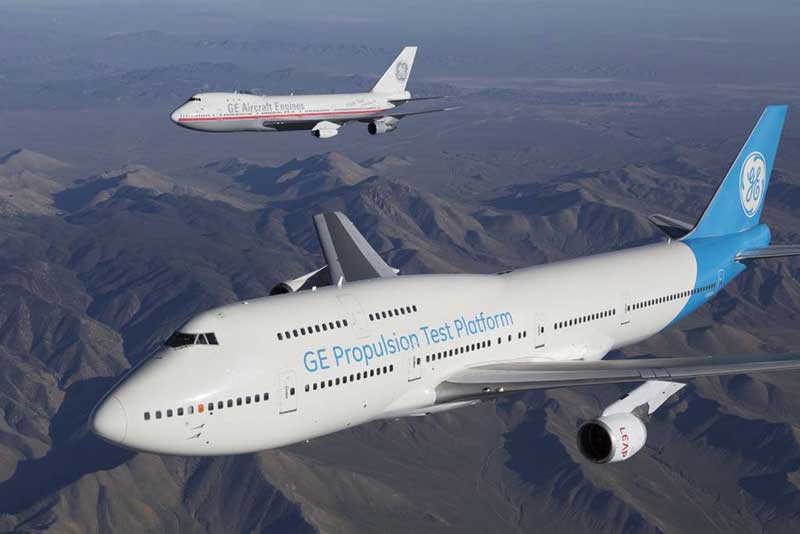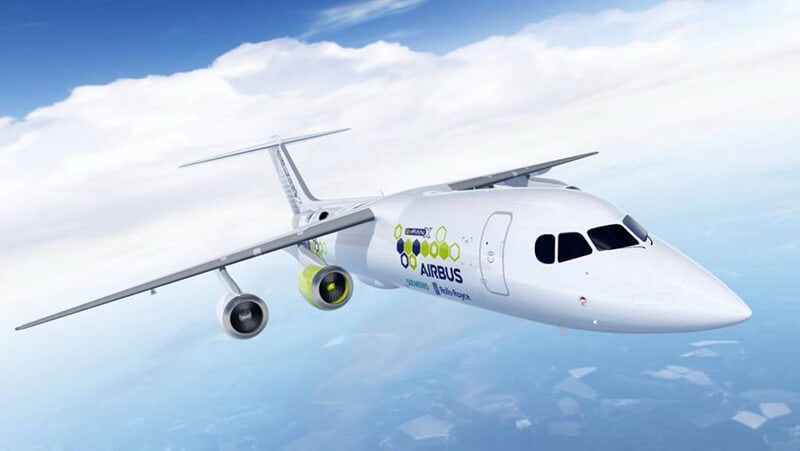- Electric engines are a big step forward
- The first hybrid-electric plane could be flying as soon as 2020
- All-electric commuter planes promise rides of unparallelled smoothness
- Clear skies – a goal worth pursuing
There are more than 40,000 flights per day in the United States alone, and the Environmental Protection Agency estimates that air transport is responsible for approximately 3 per cent of annual carbon emissions, as well as a considerable amount of sulfur oxide and hydrocarbon. Although 3 per cent doesn’t sound like much compared to other sources of pollution, even small reductions can go a long way in the global fight against climate change. And considering that the aviation industry’s emission levels have increased more than 80 per cent since 1990, there’s definitely cause for concern.
Europe has already taken concrete measures in this regard. The European Commission’s Flightpath 2050 Vision for Aviation set forth some rather lofty goals for the aviation sector, including reducing CO2 emissions by 75 per cent and cutting NOx emissions by 90 per cent. They also want to stifle noise by 65 per cent. That’ll be hard work, and reaching these goals with current tech is simply impossible. That’s why the aviation industry is increasingly looking to innovative alternatives that will minimise its environmental impact and end its reliance on fossil fuels.
Electric engines are a big step forward
Electric engines provide numerous benefits over their fuel-powered counterparts. In addition to being more environmentally friendly, they also provide a much smoother, more comfortable flying experience because their electrically driven propellers produce much less vibration. They also generate less noise, which could be beneficial not only for the passengers but also for the people who live in the vicinity of airports. Furthermore, electric engines allow airlines to offer low-cost flights, because they’re cheaper to produce and maintain. That’s because they usually have only one moving part, while conventional engines have many. Another advantage is that electric motors are far more efficient at turning energy into motion than fuel-powered alternatives. In fact, today’s electric motors are capable of achieving an efficiency of more than 95 per cent, while even the most advanced internal combustion engines can hope for no more than 55 per cent.

But it’s not all good news for electric engines. The biggest problem with them is that the battery technology required to store their power hasn’t advanced much over the last couple of decades. While they have gotten cheaper, even the most advanced batteries we have right now are still incredibly heavy, and that’s a real problem for aircraft efficiency. Innovations notwithstanding, until we develop better batteries, fossil-fueled engines will continue to dominate this sector.
For the time being, hybrid-electric airplanes that combine electric motors with conventional fuel-powered engines represent our best bet. Although they aren’t zero emission like a fully electric engine, they still produce considerably less pollution than those that rely exclusively on fuel. Hybrid-electric engines also offer new design opportunities and innovative capabilities. For example, since electric motors are much lighter, they could be installed along the plane’s wing, giving it the ability to land and take off vertically. “The hybrid really allows you to do some things that you can’t do with conventional engines,” says Dr Richard Anderson, a professor of aerospace engineering at Embry-Riddle Aeronautical University in Daytona Beach, Florida. “Most of these schemes are using the hybrid power plant tightly coupled to the design of a very aerodynamically ‘clean’ airplane, and using electric motors to make it more efficient.”
The first hybrid-electric plane could be ready flying as soon as 2020
Airbus, Rolls Royce, and Siemens recently joined forces to design a new hybrid-electric flight demonstrator called E-Fan X, which is scheduled to take its first flight sometime in 2020. The flight demonstrator will actually be a modified version of a British Aerospace 146 short-haul airliner, with a two-megawatt electric motor installed in place of one of its four gas turbine engines. It will also be equipped with the most powerful flying generator in the world and roughly two tonnes of batteries. “The E-Fan X is an important next step in our goal of making electric flight a reality in the foreseeable future. The lessons we learned from a long history of electric flight demonstrators will pave the way to a hybrid single-aisle commercial aircraft that is safe, efficient, and cost-effective,” said Paul Eremenko, Airbus’ Chief Technology Officer. “We see hybrid-electric propulsion as a compelling technology for the future of aviation.” The main goal of this project is to test whether it’s possible to generate electricity in flight safely and efficiently, as well as to evaluate the safety and efficiency of the electric engine.

And the Washington-based aviation startup Zunum Aero is working on a 12-seat hybrid-electric airliner which will be able to reach speeds of up to 550 km/h and have a range of 1,130 kilometres. The plane will be propelled by two 500KW electric fans powered by removable batteries hidden in its wings and a small jet engine located in the rear fuselage. According to Ashish Kumar, the CEO of Zunum, this technology will allow them not only to reduce fuel costs by as much as 80 per cent, but also reduce noise by 75 per cent. He says that the company will focus on short-haul flights at first, targeting small airports that are usually ignored by commercial airlines. This could help significantly reduce the environmental impact of air travel, as short-haul flights are responsible for nearly half of the industry’s emissions.
All-electric commuter planes promise rides of unparallelled smoothness
An Israeli startup, Eviation, is working on a nine-seat, all-electric commuter plane called Alice, which is scheduled to enter commercial service in 2021. Alice will have a range of approximately 1,000 kilometres and will be four times cheaper per passenger mile than conventional planes. In addition to having zero emissions due to its all-electric engines, the computer-controlled electric propellers on its wingtips will ensure a ride of unparallelled smoothness. “We’re harvesting the same kind of beautiful stability that you see in a drone flight, controlling it roughly 400 times a second, in the cruise,” says Eviation’s CEO, Omer Bar-Yohay. Alice will even be capable of autonomous flight, enabling airlines to use it for cargo flights when they are not transporting passengers.
And the LA-based startup Wright Electric is working with easyJet, the UK’s largest budget airline, on the development of an all-electric airliner which is expected to be flying by 2027. “For the first time we can envisage a future without jet fuel and we are excited to be part of it. It is now more a matter of when, not if, a short haul electric plane will fly,” said Carolyn McCall, easyJet’s outgoing chief executive. The new plane will be able to carry 150 passengers and will have a range of 540 kilometres. That’s enough to cover about 20 per cent of the airline’s current route network.
Clear skies – a goal worth pursuing
Many people are skeptical about the idea of electric planes, and some of them are questioning whether we will ever be able to resolve the weight issue associated with batteries. “The power-to-weight ratios for battery technology are still a long way short of what is required,” says Glenn Llewellyn, Airbus’ general manager for electrification. “Current batteries would be far too heavy as the only source of energy to feasibly fly a large passenger aircraft.” Others claim that the aviation industry is simply not big enough polluters to justify the expense.
Electric engine technology has already had a massive influence on the automotive industry, and the aviation industry looks to follow in its footprints on the quest to reduce its environmental impact. However, planes won’t be as easy to electrify as automobiles, mostly due to the shortcomings of existing battery technology. It will probably be a while before all-electric or even hybrid planes become a common sight. But clear skies are a goal worth pursuing.
Share via:


